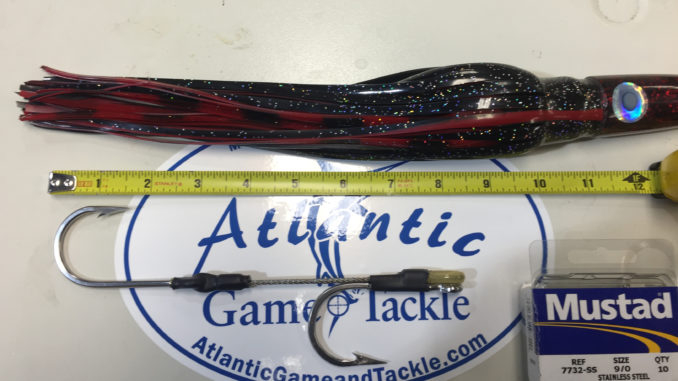
Fast-trolling with lures will put fish in the boat
For Jeremy Burnham, owner of Atlantic Game and Tackle in Mount Pleasant, March means one thing: offshore fishing for wahoo.
“The wahoo bite is crazy hot in March, and my favorite way to catch them this month is high-speed trolling,” said Burnham. “These fish are super aggressive, and they love nothing better than to chase down a lure trolling past them at high speed. I’m talking 9 to 12 knots, and when they hit these baits, it is on.”
Burnham said holding those speeds with lures big enough to stay in the water is the only real secret to hooking March wahoo. His best lures are what he calls “no-action” lures.
“All it takes is a symmetrical lure that will pull straight. You don’t want any lures that have built in wobble or action, just a lure that will swim straight,” he said.
Anglers shouldn’t be too particular about the lure’s looks, Burnham said. Homemade lures with 5- to 8-inch heads, a 10- to 12-inch skirt and two hooks are just as effective as brand-name lures, and sometimes, the uglier the lure, the better it is. Lure color isn’t a huge factor, but Burnham likes to stick with darker colors on overcast days and lighter colors on the clearest, blue sky days.
Some anglers use wire leaders with these lures, but Burnham prefers to use a 150- to 300-pound monofilament shock-top leader.
“With mono, you’ll get three times as many bites. You’ll break off more often, but in the end, you’ll have more chances at fish, which will ultimately result in catching more fish,” he said.
While Burnham (843-367-9202) usually trolls only two rods at a time, he carries multiple pre-rigged rods onboard.
“It’s like a fire drill once you find the fish, and you’ll break off sometimes, so you need to have some rods ready to go. If you’re having to re-tie without two rods in the water at all times, then you’re missing out on fish,” he said.
Burnham uses reels in a range of sizes, from 50-wide to 80-wide, and he staggers his lures behind the boat. One lure is set about 75 yards back, with the other at about 130 yards.
“This lets you zig-zag and make sharp turns without the lures running into one another and tangling the lines,” he said.
The best way to find wahoo this time of year is to find temperature breaks, and Burnham said this is where science comes into play. He relies heavily on Roffer’s Ocean Fishing Forecast Service, which finds the temperature breaks using real-time satellite imagery and numerous other data-collection techniques, then sends the GPS coordinates to anglers. Roffer’s (www.roffs.com) charges a fee for this service, but Burnham said it’s a small fee, and very well worth it.
“We burn anywhere from $900 to $1,500 in fuel on some of these trips, so if we leave the dock knowing where the temperature breaks are, it helps tremendously. We don’t have to spend time riding around looking for those breaks without a clue,” he said.
Specifically, Burnham is looking for what he calls the “hard edge” — that section of water where offshore currents are running into each other, creating an edge.
“Finding that break in the middle of the ocean is like finding gold when it comes to fishing,” he said. “That edge creates about a 4-degree difference in temperature, and a change that big attracts baitfish, which in turn attracts fish — especially wahoo — this month.”
Once on that break, Burnham said it’s just a matter of putting in the time trolling before getting into the wahoo.
“When you find the temperature break, especially if there is a big depth change nearby, you need to work that area hard. You may have to make several passes before they bite, and once you catch one, work it even harder, because where you catch one, you’ll catch two, and where you catch two, you’ll catch five, six, seven wahoo,” he said.
Burnham backs off on the drag slightly once a wahoo is hooked, then reels it in while another angler quickly reels the other lure out of the way. In terms of size, Burnham said wahoo this month will range from 15 to 80-plus pounds, with the average fish being in the 40- to 50-pound range.




Be the first to comment